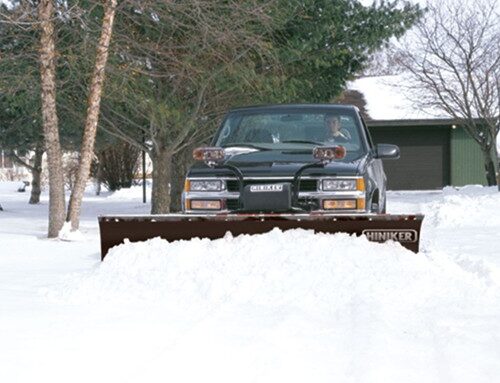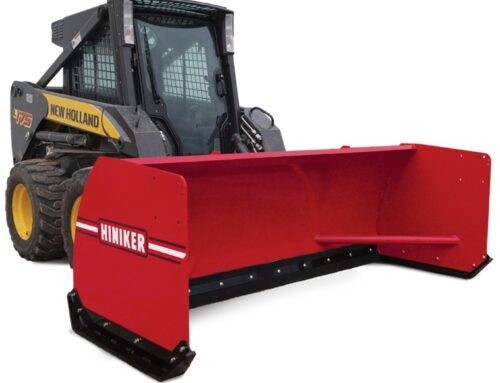Avoiding Costly Errors When Using Salt Spreaders
Winter road maintenance is essential for safety, and salt spreaders play a crucial role in keeping roads, driveways, and parking lots ice-free. Whether you’re a contractor handling commercial properties or a homeowner managing your own property, using a salt spreader correctly ensures efficiency and longevity.
However, many people unknowingly make mistakes that reduce their spreader’s effectiveness, increase maintenance costs, or even lead to equipment failure. Below are some of the most common mistakes people make with salt spreaders—and how to avoid them.
Using the Wrong Material for the Job
Not all de-icing materials work well in every spreader. Many people assume that any type of salt or sand will work, but different spreaders are designed for specific materials.
Common Issues:
- Clogging: Using damp or chunky material can jam the auger system.
- Uneven Spreading: Fine materials may not spread evenly if your spreader isn’t adjusted properly.
- Corrosion Damage: Certain de-icing materials can accelerate rust and wear on metal components.
How to Avoid This Mistake:
- Check your spreader’s specifications before choosing a de-icing material.
- Store salt in a dry place to prevent clumping.
- If using a sand spreader, make sure the material is dry and free flowing.
Ignoring Regular Maintenance
Neglecting maintenance is one of the biggest reasons salt spreaders fail prematurely. Road salt is highly corrosive, and if it’s not cleaned out regularly, it can damage the spreader’s internal components.
Common Maintenance Mistakes:
- Failing to rinse the spreader after each use, leading to rust buildup.
- Not greasing moving parts, which can cause them to seize up.
- Ignoring the wiring and electrical components, resulting in connectivity issues.
How to Avoid This Mistake:
- Rinse your spreader after each use to remove residual salt.
- Lubricate chains, bearings, and augers regularly.
- Inspect the spreader’s electrical system for loose or corroded connections.
Routine maintenance can extend the life of your salter and prevent costly repairs down the road.
Incorrect Spreader Calibration
A common mistake many people make is assuming their salt spreaders are correctly calibrated right out of the box. Improper calibration leads to overuse or underuse of material, resulting in wasted product or unsafe conditions.
Signs of Poor Calibration:
- Over-spreading: Using too much salt wastes money and harms the environment.
- Under-spreading: Not using enough material leaves ice patches and unsafe surfaces.
- Uneven distribution: Snow and ice melt inconsistently, causing slippery spots.
How to Avoid This Mistake:
- Follow the manufacturer’s instructions for proper calibration.
- Test your spreader in a controlled area before full use.
- Adjust settings based on the type of salt or sand you’re using.
A well-calibrated spreader ensures efficient de-icing while reducing waste.

Overloading or Improperly Loading the Spreader
Loading a spreader incorrectly can lead to uneven distribution, equipment strain, and even mechanical failure.
Common Loading Mistakes:
- Filling the spreader beyond its capacity, putting stress on the motor.
- Loading unevenly, which causes inconsistent spreading.
- Not using a screen or grate to filter out clumps.
How to Avoid This Mistake:
- Always follow the weight limit guidelines provided by the manufacturer.
- Load material evenly to maintain balance and proper spreading.
- Use a grate to break up clumps before they enter the spreader.
For those using tailgate spreaders, ensuring an even load is even more important to maintain proper weight distribution on the truck.
Buying the Wrong Type of Spreader for Your Needs
There are several types of salt spreaders, and choosing the wrong one can lead to inefficiency and frustration.
Types of Salt Spreaders:
- Tailgate Spreaders: Attach to the back of trucks for medium to large areas.
- Walk-Behind Spreaders: Best for small residential spaces.
- Hopper Spreaders: High-capacity units designed for large commercial applications.
How to Avoid This Mistake:
- Consider the size of the area you need to cover.
- Consult a tailgate spreader dealer to find the best option for your truck.
- Determine whether you need a combination tailgate sander and salt spreader for added versatility.
Choosing the right spreader ensures efficient and cost-effective ice management.
Failing to Store the Spreader Properly in the Off-Season
Leaving a spreader outside, exposed to the elements, will drastically shorten its lifespan. Rust, moisture buildup, and electrical failures are common issues when spreaders aren’t stored correctly.
How to Properly Store a Spreader:
- Clean thoroughly – Remove all salt residue and dry completely.
- Inspect for damage – Replace any worn parts before storage.
- Store in a covered area – Keep it in a garage or use a weatherproof cover.
Proper storage protects your investment and ensures your spreader is ready for the next winter season.
Get the Most Out of Your Salt Spreader
Avoiding these common mistakes will help you get the best performance from your salt spreaders while extending their lifespan. Proper maintenance, calibration, and correct material usage make all the difference in keeping roads and walkways safe.
If you’re looking for reliable equipment, expert advice, or a new spreader, find a Hiniker dealer today for high-quality winter maintenance solutions.

Hiniker has been a proud Minnesota based manufacturer since 1995. We are proud to offer the highest quality salt & sand spreaders, snow plows, skid steers, truck plows, accessories and more! Our equipment at Hiniker is built to enable the operator to work as efficiently as possible.
At Hiniker, we take great pride in providing equipment that is straightforward and reliable. We can help you with anything from a blaze bar light to tailgate spreaders. Our team wants you to avoid as much downtime as possible so you can clear all the snow and ice that stands in your way!
Contact us today by calling (800) 433-5620 to find out more about the premium snow removal products we offer. You can also follow us on Facebook for the latest news regarding Hiniker’s premium equipment and accessories.





